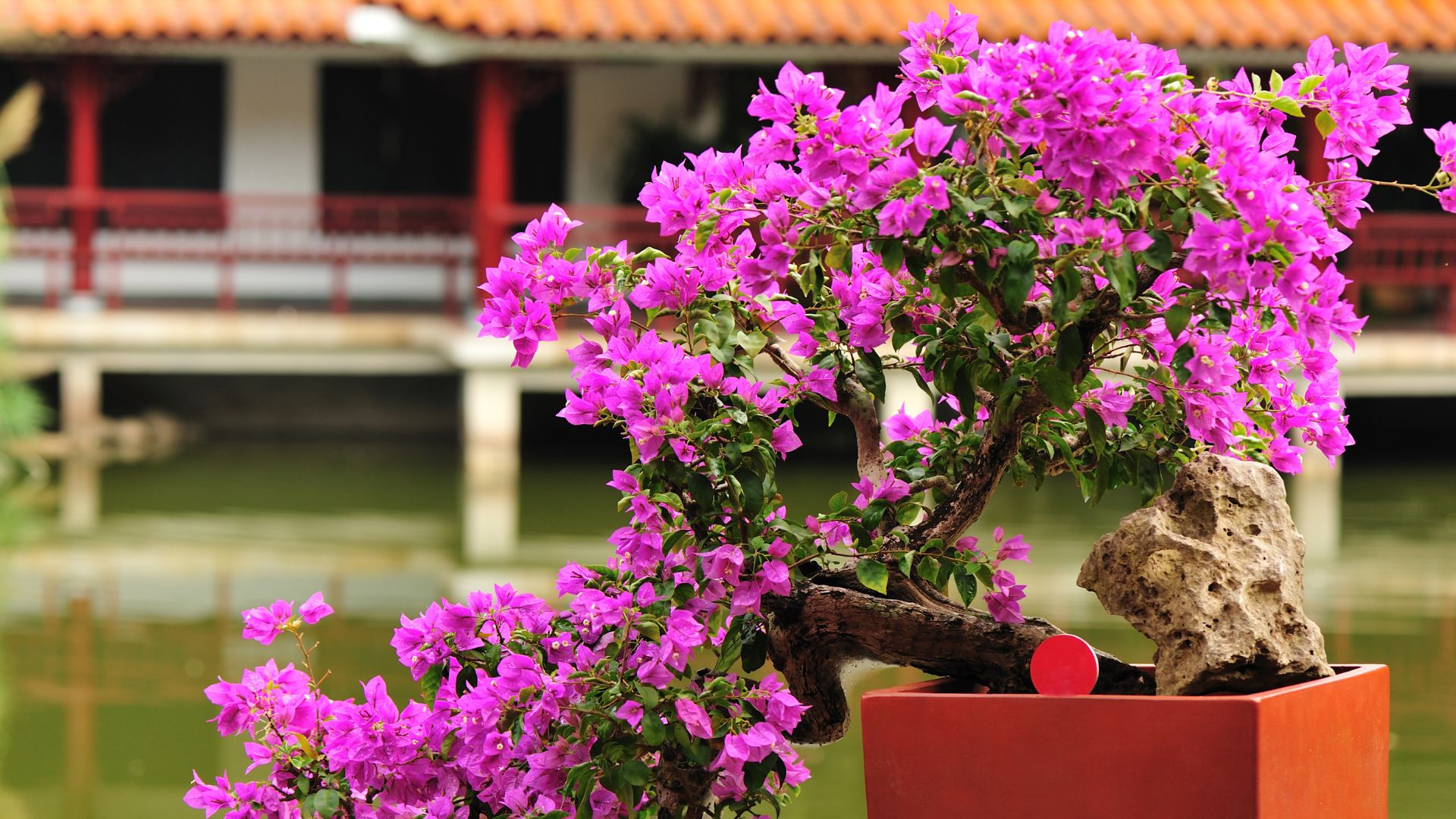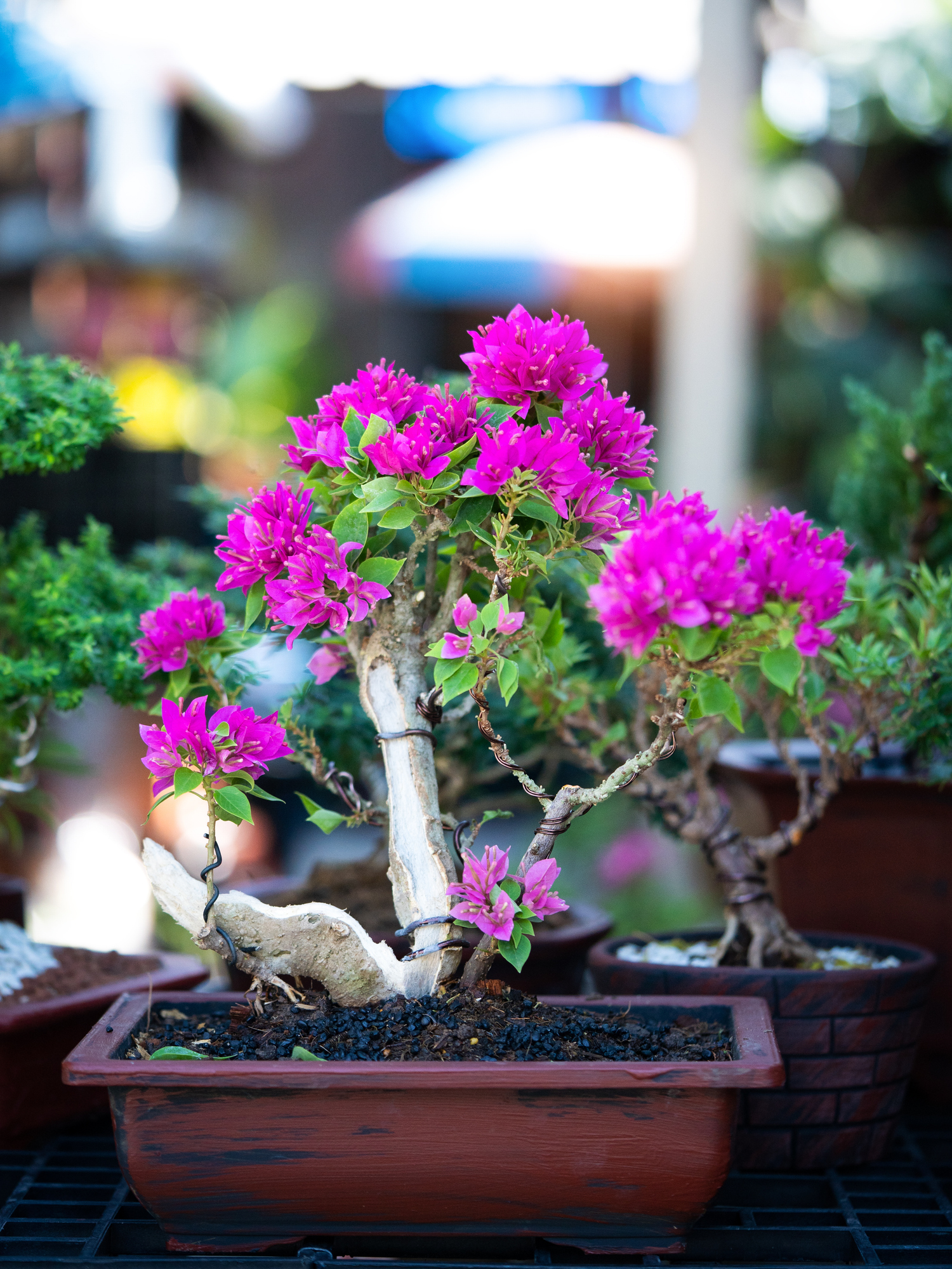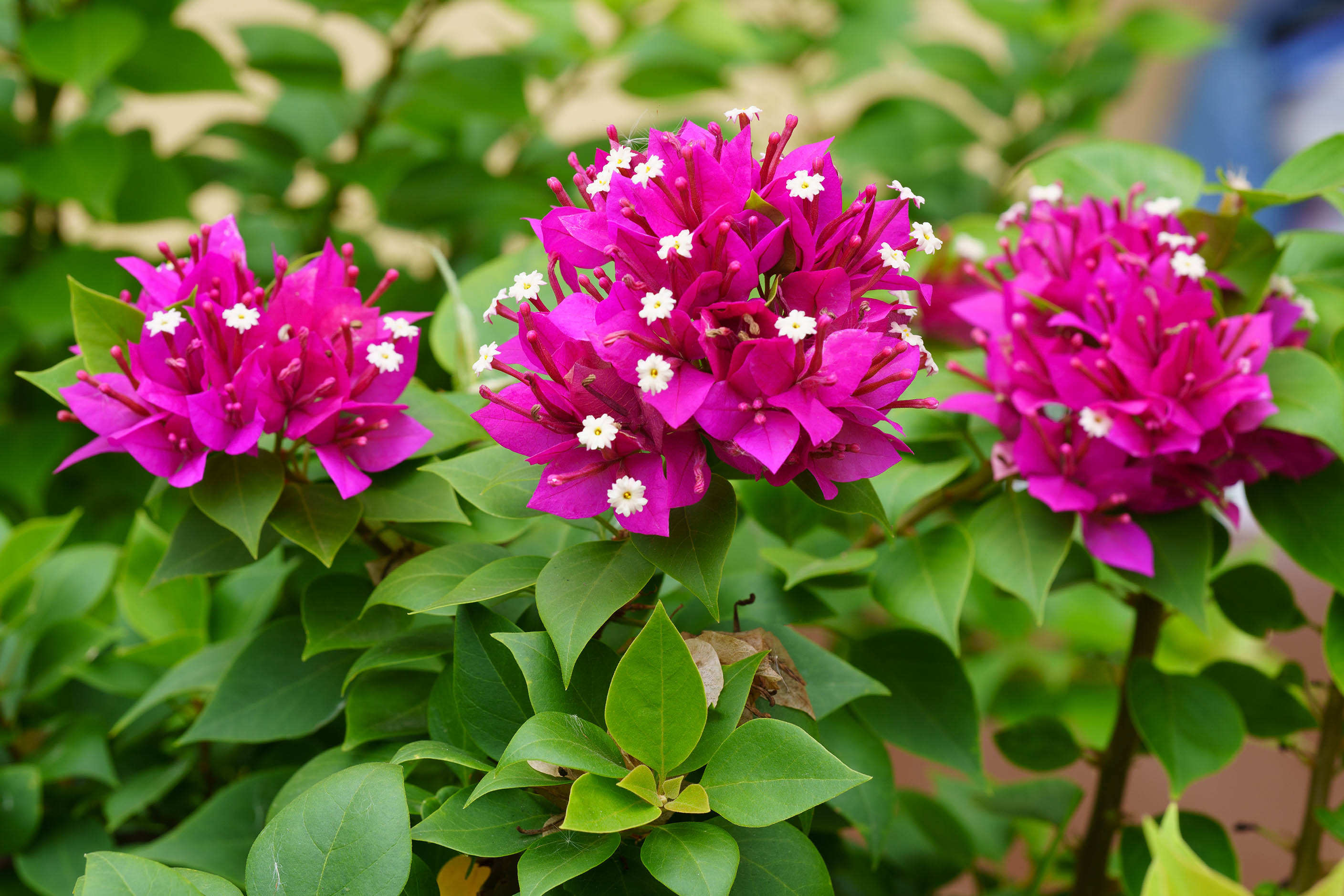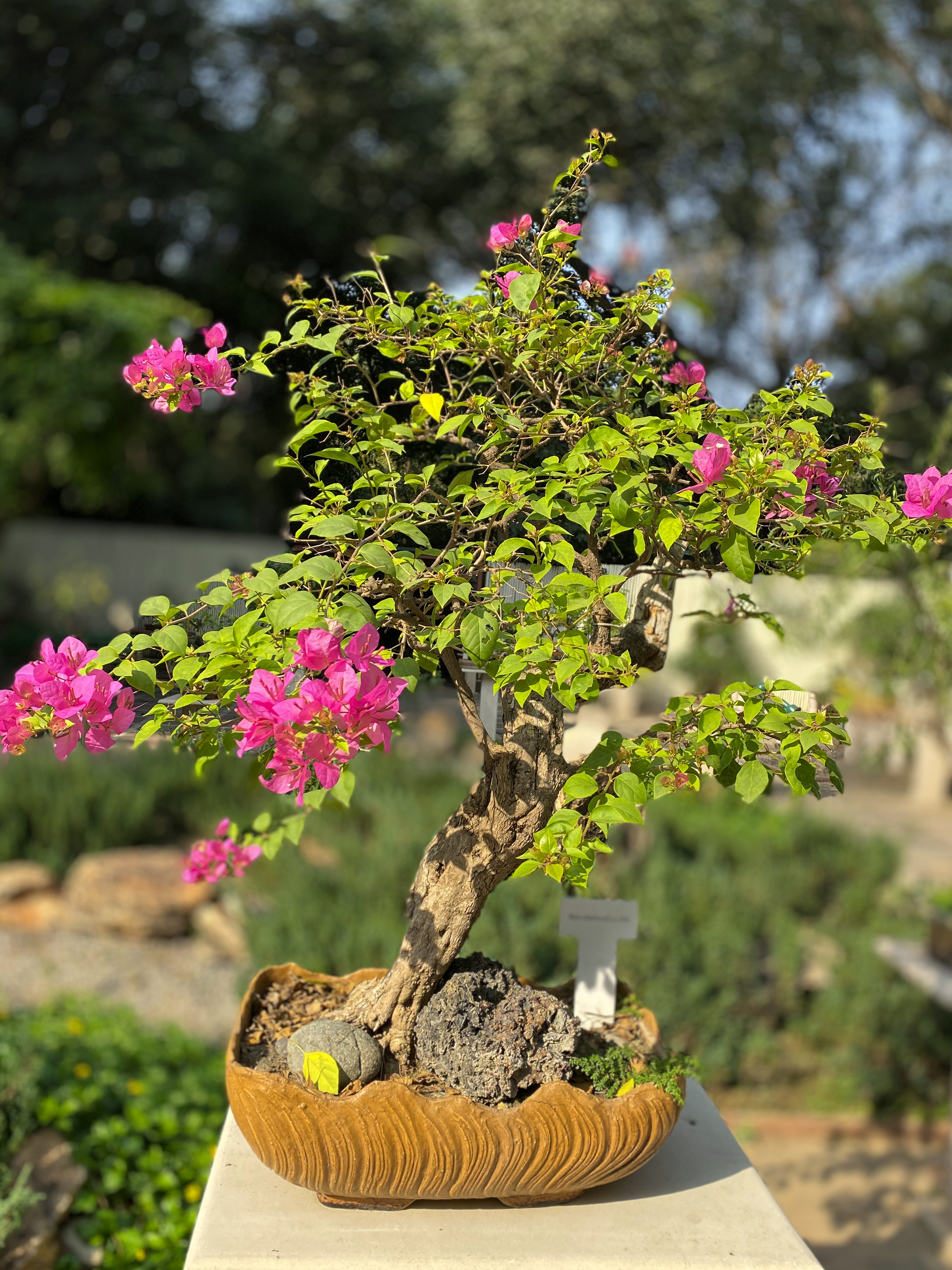
We love watching as certain fabulous blooms get their turn in the sun as they rise to popularity, and the pick of the season seems to be the ever-so-tropical bougainvilleas. With their classic pink flowers that are paper delicate and their overall hardiness, we aren't surprised to see these beauties in the spotlight.
But it's not just any form of these full sun perennials that are getting their recognition. This time, it's the bougainvillea bonsais that are rising to the occasion. And let me just tell you, I've always admired these plants from afar but because of their trailing branches and tall stature, I never thought of growing them myself.
But now that there's a compact bonsai variety in the game, I might just have to get one of my own. I mean, who wouldn't want a pretty little bougainvillea bonsai to add to their collection. Plus, we've got the inside scoop on how to prune these blooms and keep them picture perfect year-round.
Bougainvillea Bonsai Trees

We've seen these charming bougainvillea bonsais popping up all over 'GardenTok' recently and had to find out how to get to growing one of our own. So we had a chat with gardening expert Tony O'Neill and he has given us all the information we need to tap into this stunning bonsai trend.
"Bougainvillea bonsais are trending because they combine the vibrant, showy bracts of the bougainvillea with the artistry and discipline of bonsai cultivation," he explains. "Their colorful, papery flowers bloom almost year-round in the right conditions, making them an appealing choice for bonsai enthusiasts who want a splash of color in their miniature trees."
Additionally, Tony explains that bougainvilleas are relatively easy to shape and train, allowing for a range of creative bonsai designs. So if you're interested in giving your backyard a fun spruce, why not implement some tropical garden ideas, for which bougainvillea bonsais are your best bet.
How and Where to Plant Your Own Bougainvillea

The thought of bonsai styling in and of itself can be a bit overwhelming and you might even wonder if you have the skill set to engage in this time-honored tradition. However, Tony tells us that all it truly takes is a touch of patience and a some dedication towards the craft to successfully cultivate your own bonsai garden.
When it comes to growing your own bougainvillea bonsai, Tony recommends starting with a young plant in well-draining soil, as these plants don’t like to sit in water. He finds that a mix of bonsai soil with added sand or perlite works well. Next, he recommends choosing a sunny location, ideally experiencing at least 5-6 hours of direct sunlight per day, which is crucial for colorful blooms. All that's left to do is then bonsai style the tree as it grows.
"When shaping your bougainvillea bonsai, prune regularly to encourage branching and maintain the desired shape," he explains. "Just remember to be gentle when wiring branches as bougainvillea wood can be brittle."
The best part is that these bougainvillea bonsais double as beautiful houseplants but do just as well in the open outdoors. So you can have your pick of locations to give them pride-of-place in your homes.
What Makes Bougainvillea a Good Option for Bonsai Art?

According to Tony, bougainvillea is a great option for bonsai art due to its flexibility and the visual appeal of its colorful bracts. "Its growth habit allows for a variety of bonsai styles, including cascade, semi-cascade, and informal upright," he explains. "And the plant's resilience and ability to bounce back after pruning make it ideal for beginners and experienced bonsai enthusiasts alike."
Plus, Tony finds that the bright colors add a unique and eye-catching element to any bonsai collection. So while the first image of a bonsai tree to pop into mind may be just a dwarfed green tree with tiny leaves, bougainvilleas might just be the underdogs of the bonsai game. And the next time you're decorating with plants, you now have a new bloom to rely on for some lovely vibrant foliage.
Price: $111
Includes: Kaneshin Bonsai Tool Pouch, Kaneshin Bonsai Spatula Tweezers, Sentei Bonsai
FAQs
How to care for bougainvillea bonsais

If you're wondering how to care for bonsais so that your meticulous pruning does not go to waste, Tony finds that there are three simple tips to imbibe into your schedule for immaculate bougainvillea blooms.
Watering: Bougainvilleas are drought-tolerant but don’t like being waterlogged. So Tony recommends allowing the soil to dry out slightly between waterings as this will encourage better flowering.
Feeding: "Fertilize your bonsai with a balanced fertilizer every 4-6 weeks during the growing season," he says. "And I find that a fertilizer higher in phosphorus is ideal for prolific blooms."
Pruning: He also adds that regular pruning helps maintain the shape and encourages new growth. So, it's best to always prune just after flowering to allow for a new growth cycle.
If you have a compact space to work with and you feel like you're missing out on the simple pleasures of growing your own plants, then bonsais are a winning solution. And these bougainvillea bonsais allow you to get on trend while also accommodating your need for smaller blooms.
And we find that it's a wonderful way to force yourself to disconnect and carve out a little zen time to prune your bougainvillea bonsai in peace. A win for your space, your plant and maybe even your mental health - that's a triple threat, in the best way.







